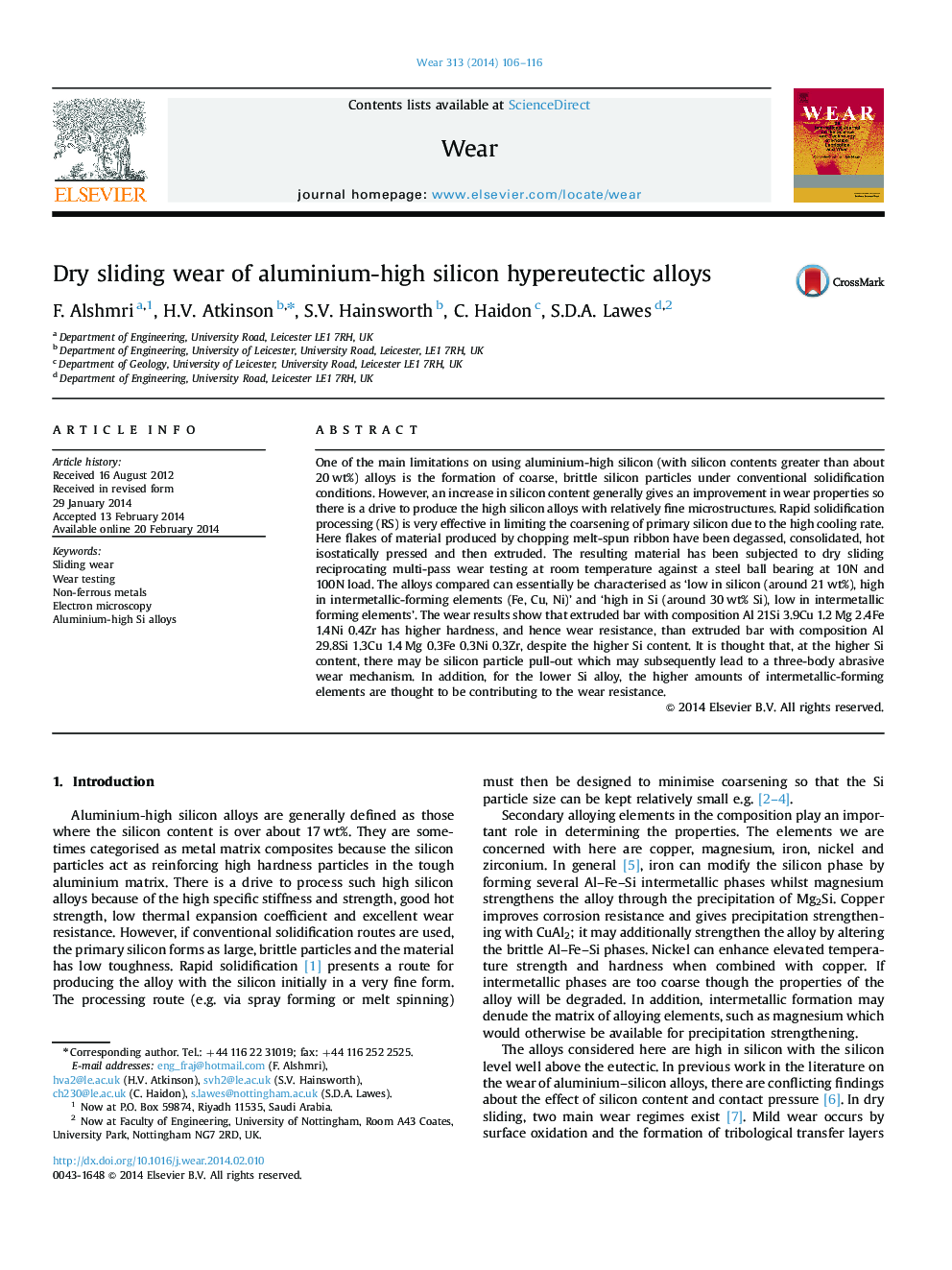| کد مقاله | کد نشریه | سال انتشار | مقاله انگلیسی | نسخه تمام متن |
|---|---|---|---|---|
| 617371 | 1644964 | 2014 | 11 صفحه PDF | دانلود رایگان |
• Dry sliding wear results are presented.
• Al~20 wt% Si containing intermetallic forming elements resists wear well.
• Al~30 wt% Si with lower quantities of intermetallics is less wear resistant.
• This may be due to Si particle pull-out and hence 3-body abrasive wear.
• The intermetallics may also be playing an important role.
One of the main limitations on using aluminium-high silicon (with silicon contents greater than about 20 wt%) alloys is the formation of coarse, brittle silicon particles under conventional solidification conditions. However, an increase in silicon content generally gives an improvement in wear properties so there is a drive to produce the high silicon alloys with relatively fine microstructures. Rapid solidification processing (RS) is very effective in limiting the coarsening of primary silicon due to the high cooling rate. Here flakes of material produced by chopping melt-spun ribbon have been degassed, consolidated, hot isostatically pressed and then extruded. The resulting material has been subjected to dry sliding reciprocating multi-pass wear testing at room temperature against a steel ball bearing at 10N and 100N load. The alloys compared can essentially be characterised as ‘low in silicon (around 21 wt%), high in intermetallic-forming elements (Fe, Cu, Ni)’ and ‘high in Si (around 30 wt% Si), low in intermetallic forming elements’. The wear results show that extruded bar with composition Al 21Si 3.9Cu 1.2 Mg 2.4Fe 1.4Ni 0.4Zr has higher hardness, and hence wear resistance, than extruded bar with composition Al 29.8Si 1.3Cu 1.4 Mg 0.3Fe 0.3Ni 0.3Zr, despite the higher Si content. It is thought that, at the higher Si content, there may be silicon particle pull-out which may subsequently lead to a three-body abrasive wear mechanism. In addition, for the lower Si alloy, the higher amounts of intermetallic-forming elements are thought to be contributing to the wear resistance.
Journal: Wear - Volume 313, Issues 1–2, 15 May 2014, Pages 106–116
